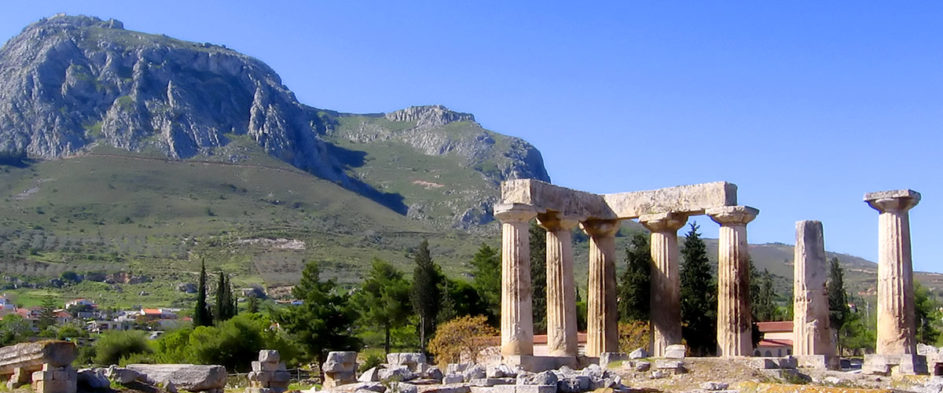A Day in Athens and Corinth: Unveil the Legends, Live the History
TOUR ITINERARY
Starting Point
We will pick you up from the port, airport or your hotel and start our tour.
Philopappos Hill
Acropolis
Parthenon
Theater of Dionysus
Temple of Olympian Zeus
Roman Agora
National Archaeological Museum
Panathenaic Stadium
Academy of Athens
Changing of the Guards
Mount Lycabettus
Plaka
Corinth Canal
Ancient Corinth
Temple of Apollo
Temple of Octavia
Lechaion Road
Fountain of Pirene
The Agora
Bema
Acrocorinth
End of Tour
We will return you to the pick up point or prearranged destination.
Important information about your private tour
INCLUDED
EXCLUDED
ENTRANCE FEES
**Please note that all our licensed tour drivers are fully knowledgeable of the history of each monument in your tour's itinerary. However, by law licensed tour drivers are forbidden to enter any archaeological site and conduct tours. Only licensed tour guides are allowed to conduct guided tours on the archaeological site itself. Upon your request, a licensed tour guide can be booked for you at the archaeological site of your choice at an extra cost.
TOUR DESCRIPTION
Get ready to dig deep into the history and myth of two iconic Greek cities—Athens and Corinth. This is not your typical tour; this is an immersive experience that'll have you buzzing from dawn till dusk. Fasten your seatbelts; we're in for an odyssey!
The Grand Opening: Philopappus Hill & The Acropolis
We kick things off with an unforgettable panorama of Athens from Philopappus Hill—every photographer's dream. Framed by olive trees, the hill gives you a teasing glance of the Acropolis. Next, it's time to scale the 'Sacred Rock'. Be awe-struck by the Parthenon, drink in the history at the Acropolis Museum, and revel in the presence of the Temple of Athens Nike. One €12 ticket grants you entry into this and five more archaeological sites: the Theater of Dionysus, the Temple of Olympian Zeus, the Roman and Greek Agoras, and the Keramikos.
World-Class Museums: Time-Traveling with Artifacts
If your clock allows, let's go museum-hopping! The National Archaeological Museum ranks among the world’s finest. But don't stop there; the Museum of Cycladic Art and the Benaki Museum offer more tales told through art.
The Marble Marvel: Panathenaic Stadium
Next, we dash to the Kalimarmaro, the only marble stadium in existence! Feel the echo of the 2004 Olympics and imagine the games of ancient times as you stand in this marvel built in 330 BC.
Athens’ Cornerstones: Monuments and Memorials
We then unveil Athens' intellectual trio: the Academy, the University, and the National Library. We'll also tip our hats to the 'Marathon Man', a tribute to the incredible feat of Phidippides. Here's where you can scream 'NENIKIKAMEN!' (We won!) just like he did in 490 BC.
The Changing of the Guard: A High-End Show
Ever witnessed the changing of the guard at one of Athens' priciest addresses? Behold this intricate ritual in front of the Presidential Palace and catch the Sunday spectacle involving 52 national guards and a band, all against the lush backdrop of the National Gardens.
Kolonaki & Lycabettus Hill: The Chic and the Peak
We weave through the narrow lanes of Kolonaki, Athens' Soho, to scale Lycabettus Hill. Enjoy Greek coffee amidst authentic Greek chatter, and shop designer brands before ascending to the highest point in Athens. The tiny church of St. George at the summit sets the scene for some epic photography.
Plaka: The Stone that Named a District
We then meander into Plaka, where even the name holds a story tied to the St. George of Alexandria church. Rich in lore, this area is the very essence of Athens.
Coastline to Corinth: A Journey Through Time
As we say 'see you later' to Athens, we drive along the picturesque coastline towards Corinth. Our first stop is the Corinth Canal, where, if luck’s on our side, we'll see a ship traverse this ancient engineering feat. Then it's off to Ancient Corinth, with its unique blend of Roman and Greek architecture. St. Paul stood here, preaching in 62 A.D. The Temple of Octavia, ancient Lechaion Road, and the museum of beautiful amphorae await.
The Final Bow: Acrocorinth and Farewell
To cap off the day, we ascend to Acrocorinth. Here, above the modern city, history and present converge. Lunch could be a coastal delight in Corinth or a culinary spectacle back in Plaka. Finally, you'll be returned to your starting point, taking with you a day's worth of tales, history, and unmatched experiences.
